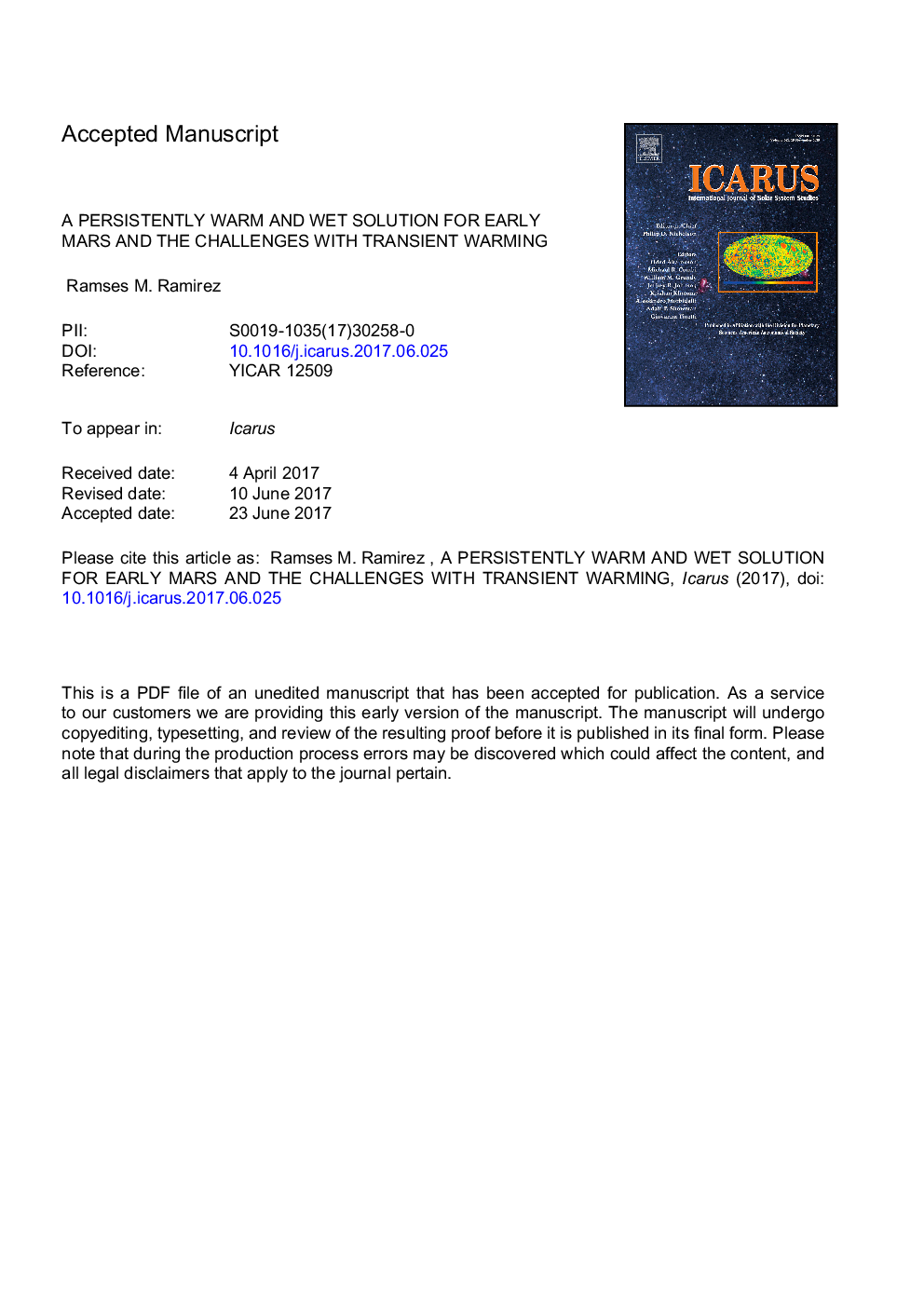| کد مقاله | کد نشریه | سال انتشار | مقاله انگلیسی | نسخه تمام متن |
|---|---|---|---|---|
| 5487167 | 1523494 | 2017 | 57 صفحه PDF | دانلود رایگان |
عنوان انگلیسی مقاله ISI
A warmer and wetter solution for early Mars and the challenges with transient warming
ترجمه فارسی عنوان
یک راه حل گرم و مرطوب برای مریخ اولیه و چالش ها با گرم شدن گذرا
دانلود مقاله + سفارش ترجمه
دانلود مقاله ISI انگلیسی
رایگان برای ایرانیان
کلمات کلیدی
مریخ، اتمسفر، آب و هوا، اتمسفر، سیر تکاملی،
موضوعات مرتبط
مهندسی و علوم پایه
علوم زمین و سیارات
علوم فضا و نجوم
چکیده انگلیسی
The climate of early Mars has been hotly debated for decades. Although most investigators believe that the geology indicates the presence of surface water, disagreement has persisted regarding how warm and wet the surface must have been and how long such conditions may have existed. Although the geologic evidence is most easily explained by a persistently warm climate, the perceived difficulty that climate models have in generating warm surface conditions has seeded various models that assume a cold and glaciated early Mars punctuated by transient warming episodes. However, I use a single-column radiative convective climate model to show that it is relatively more straightforward to satisfy warm and relatively non-glaciated early Mars conditions, requiring only â¼1% H2 and 3â¯bar CO2 or â¼20% H2 and 0.55â¯bar CO2. In contrast, the reflectivity of surface ice greatly increases the difficulty to transiently warm an initially frozen surface. Surface pressure thresholds required for warm conditions increase â¼10 - 60% for transient warming models, depending on ice cover fraction. No warm solution is possible for ice cover fractions exceeding 40%, 70%, and 85% for mixed snow/ice and 25%, 35%, and 49% for fresher snow/ice at H2 concentrations of 3%, 10%, and 20%, respectively. If high temperatures (298-323â¯K) were required to produce the observed surface clay amounts on a transiently warm early Mars (Bishop et al), I show that such temperatures would have required surface pressures that exceed available paleopressure constraints for nearly all H2 concentrations considered (1-20%). I then argue that a warm and semi-arid climate remains the simplest and most logical solution to Mars paleoclimate.
ناشر
Database: Elsevier - ScienceDirect (ساینس دایرکت)
Journal: Icarus - Volume 297, 15 November 2017, Pages 71-82
Journal: Icarus - Volume 297, 15 November 2017, Pages 71-82
نویسندگان
Ramses M. Ramirez,
